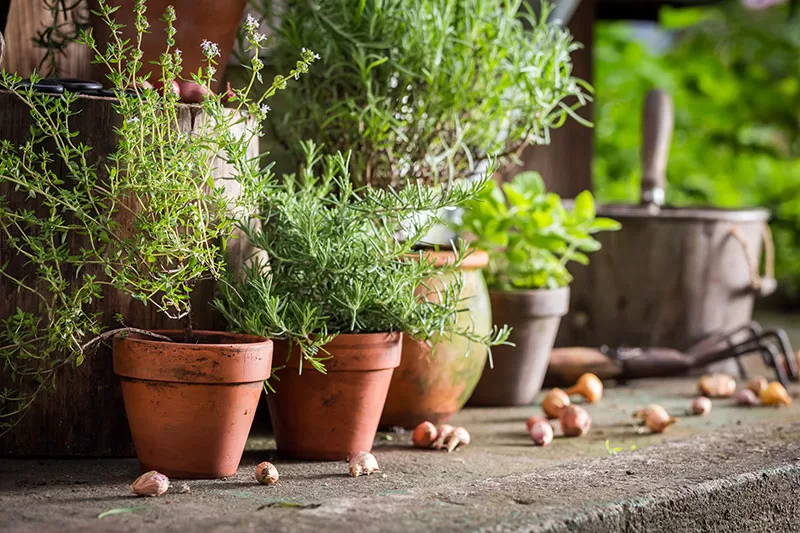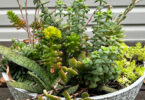1. Mulch, mulch, mulch
Mulching reduces water evaporation by up to 70% and help protect plant roots from extreme temperatures. Adding a layer of organic mulch such as straw or sugar cane also breaks down and provides nutrients to the soil and plant.
2. Ditch the terracotta
Terracotta is an extremely porous material so a large amount of moisture is lost from the potting mix. Make the switch to recycled plastic or glazed terracotta pots instead. If you’re still going for the terracotta look, paint the inside of the pot with a sealant.
3. Self watering pots
This is a no-brainer. Self-watering pots contain a reservoir at the base which holds water. This water is then absorbed by the potting mix slowly, making water available to the plant for much longer.
4. Group pots together
Grouping your pots together allows plants to provide shade for each other therefore reducing water loss. It creates a microclimate with higher humidity. Grouped pots can also look quite stunning!
5. Relocate plants
If the option is there, relocate potted plants to a shadier/cooler spot. Check your actual plant species but most full sun plants can tolerate part shade as well. If no shadier permanent home is available, move plants temporarily under cover, especially when you know a blistering Summer’s day is ahead. The use of shadecloth or some other temporary structure is also an option.
6. Seaweed solution
Seaweed Solution (such as Seasol) is a plant health tonic that Increases resistance to heat, drought, frost, pests and diseases. Regular application makes your plants more resilient to these forces and provides the plant with enough strength to endure the really hot days. A lot of seaweed solutions are mixed with water then applied (check the label of your product) so your plant gets a drink too.
7. Use wetting agents
In a nutshell, soil particles and aging potting mix can form a water resistant waxy coating which repels water. Even if you frequently water your potted plants, the moisture is not retained. Wetting agents break down the waxy coating, allowing the water to be absorbed by the potting mix and subsequently taken up by the plant’s roots.
8. Early morning & deep watering
It is far better to give your plants a good soak less frequently than a light spray regularly. Watering the potting mix less thoroughly encourages plant roots to rise to the surface. This, in turn, results in the roots drying out much quicker.
The best time of day to water is early morning. This gives the plants chance to absorb water for the day ahead before the harsh afternoon sun is upon them. It also greatly reduces evaporation and the incidence of leaf burn. Plants that are watered in late afternoon are at higher risk of encountering fungal diseases.
9. Correct plant choices
Choosing drought tolerant plants for a hot spot means the odds of survival are greatly increased. There are many Australian native, succulent and Mediterranean plants that thrive in the heat.
10. Plant at the correct time
Avoid planting into pots during Summer. The roots have not had the opportunity to establish themselves. Spring and Autumn are much better times.
Where possible, go for a bigger pot which holds more mix. More mix means more water retention and availability.








